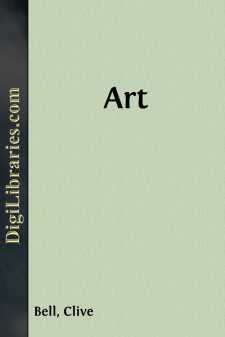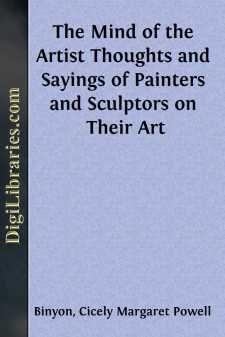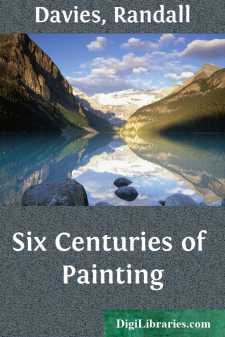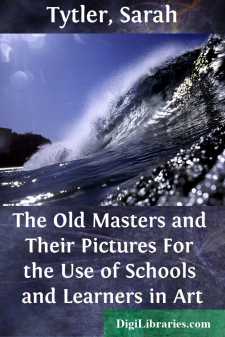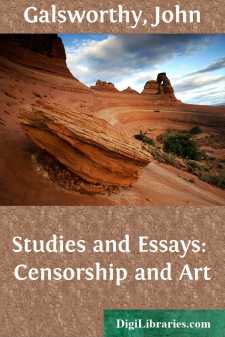Art
- African 1
- Asian 2
- Collecting 1
- Collections, Catalogs, Exhibitions 6
- Criticism 2
- European 8
- General 14
- History 11
- Middle Eastern 1
- Sculpture 4
Art Books
Sort by:
by:
Taha Atef
Are you ready to unleash your voice and build a podcast empire? "How to Make a Podcast with 1 Million Subscribers" is your ultimate roadmap to podcasting success. Whether you're a complete novice or have dabbled in audio content before, this comprehensive guide will take you from zero to podcast hero. Inside these pages, you'll discover: A foolproof, step by step process to launch your...
more...
CHAPTER I Venetian painting in its prime differs altogether in character from that of every other part of Italy. The Venetian is the most marked and recognisable of all the schools; its singularity is such that a novice in art can easily, in a miscellaneous collection, sort out the works belonging to it, and added to this unique character is the position it occupies in the domain of art. Venice alone...
more...
by:
Clive Bell
I THE AESTHETIC HYPOTHESIS It is improbable that more nonsense has been written about aesthetics than about anything else: the literature of the subject is not large enough for that. It is certain, however, that about no subject with which I am acquainted has so little been said that is at all to the purpose. The explanation is discoverable. He who would elaborate a plausible theory of aesthetics must...
more...
INTRODUCTION. The origin of painting is unknown. The first important records of this art are met with in Egypt; but before the Egyptian civilization the men of the early ages probably used color in ornamentation and decoration, and they certainly scratched the outlines of men and animals upon bone and slate. Traces of this rude primitive work still remain to us on the pottery, weapons, and stone...
more...
by:
Laurence Binyon
INTRODUCTION Whatever its outward expression, human thought remains essentially unchanged and, throughout all of its manifestations, is fundamentally the same. Varying phases are but accidents and underneath the divers wrappings of historic periods or different civilizations, the heart as well as the mind of man has been moved by the same desires. Art possesses a unity like that of nature. It is...
more...
THE MIND OF THE ARTIST An able painter by his power of penetration into the mysteries of his art is usually an able critic. Alfred Stevens. The Belgian painter, not the English sculptor. Art, like love, excludes all competition, and absorbs the man. Fuseli. A good painter has two chief objects to paint, namely, man, and the intention of his soul. The first is easy, the second difficult, because he has...
more...
Sculpture of the Exposition Palaces and Courts "The influence of sculpture is far reaching. The mind that loves this art and understands its language will more and more insist on a certain order and decorum in visual life. It opens an avenue for the expression of aesthetic enjoyment somewhere between poetry and music and akin to drama. - Arthur Hoeber The Fountain of Energy A. Stirling Calder,...
more...
by:
Randall Davies
INTRODUCTORY So far as it concerns pictures painted upon panel or canvas in tempera or oils, the history of painting begins with Cimabue, who worked in Florence during the latter half of the thirteenth century. That the art was practised in much earlier times may readily be admitted, and the life-like portraits in the vestibule at the National Gallery taken from Greek tombs of the second or third...
more...
by:
Sarah Tytler
EARLY ITALIAN ART—GIOTTO, 1276-1337—ANDREA PISANO. 1280-1345—ORCAGNA, 1315-1376 GHIBERTI, 1381-1455—MASACCIO, 1402-1428 OR 1429—FRA ANGELICO, 1387-1455. A pencil and paper, a box of colours, and a scrap-book, form so often a child's favourite toys that one might expect that a very large portion of men and women would prove painters. But, as we grow in years and knowledge, the discrepancy...
more...
by:
John Galsworthy
ABOUT CENSORSHIP Since, time and again, it has been proved, in this country of free institutions, that the great majority of our fellow-countrymen consider the only Censorship that now obtains amongst us, namely the Censorship of Plays, a bulwark for the preservation of their comfort and sensibility against the spiritual researches and speculations of bolder and too active spirits—it has become time...
more...




